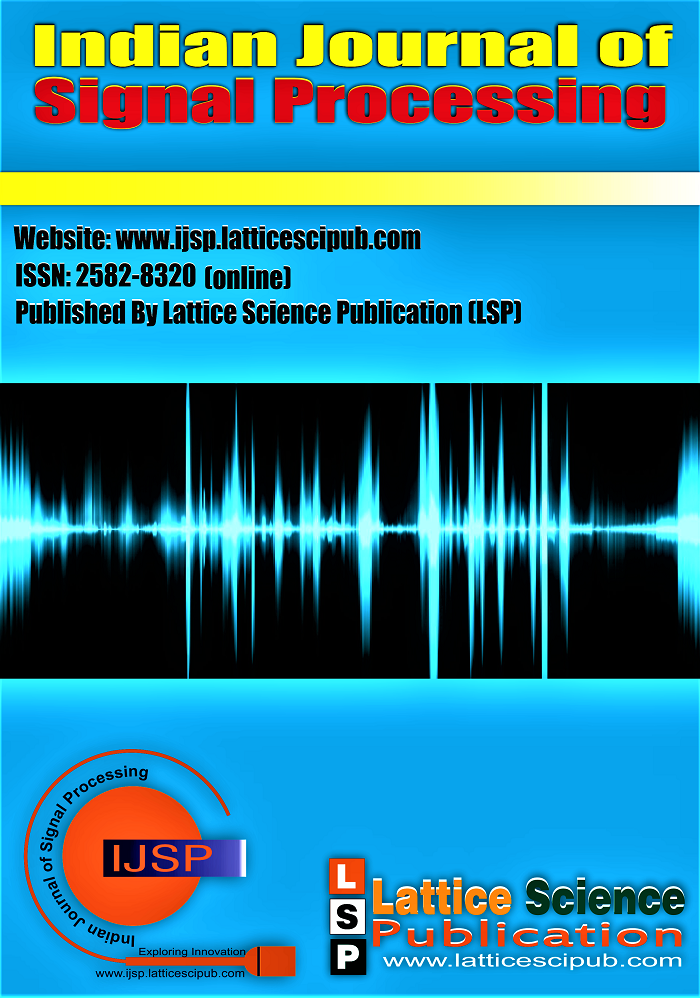The Smart Sailing Robot for N avigational Investigation is Used to Explore all the Details on the Zone of the Water Pura
Main Article Content
Abstract
Ocean Exploration and Navigational Research is driving undertakings by supporting undertakings with PC vision frameworks have shown potential for Sailboat robots made to make assessments at the surface. The marine environment presents an in each commonsense sense, ideal showing ground for the assessment and improvement of robotized progressions. Robot cruising is a tricky task in both turn of events and controlling the boat consequently it joins a wide degree of orders. The cruising robot researches in comprehension of video film, the ID of cruising features, human-robot correspondence, vehicle control, position assessment and mechanical course of action. Key applications for this vessel are the appraisal of marine living spaces and complex moves. An idea presented has been with a Robotic vehicle what starts normally and truly control the moving thing in the water the robot will get and sends the information to the PC which uses advanced picture managing improvement and investigates appropriate pictures by seeing cut down features which will follow the article present in the outside of ocean. The DC motors are used to turn the arms of the robot to get living spaces.
Downloads
Article Details

This work is licensed under a Creative Commons Attribution-NonCommercial-NoDerivatives 4.0 International License.
How to Cite
References
Abril J., Salom J., S.O. (1997). Fuzzy control of a sailboat. International Journal of Approximate Reasoning. Alexander Schlaefer, O.B. (ed.) (2011). Proceedings of the 4th International Robotic Sailing Conference. Springer. Atmel (2016). Atmega2560. http://www.atmel.com/devices/atmega2560.aspx. Accessed: 03-04-2016. [CrossRef]
Stelzer, R. and Jafarmadar., K. (2011). History and recent developments in robotic sailing. Proceedings of the 4th International Robotic Sailing Conference.
Fabrice Le Bars, L.J. (ed.) (2013). Proceedings of the 6th International Robotic Sailing Conference. Springer.
Breivik, M. and Fossen, T.I. (2009). Guidance laws for autonomous underwater vehicles. InTech. CAN bus (2016). Controller area network (can) overview. http://www.ni.com/white-paper/2732/en/. Accessed: 03-04-2016. [CrossRef]
Van Aartrijk, M.L., Tagliola, C.P. and Adriaans, P.W. (1999). AI on the ocean: the robosail project. In Proceedings of the 15th European Conference on Artificial Intelligence
L. Xiao and J. Jouffroy. Modeling and nonlinear heading control of sailing yachts. In Proc. IEEE Journal of Oceanic engineering, 39(2):256– 268, 2014. [CrossRef]
R. Stelzer, T. Proll, and R.I. John. Fuzzy logic control system for autonomous sailboats. In In IEEE Fuzzy Systems Conference, pages 1–6, 2007. [CrossRef]
F. Plumet, H. Saoud, and M-D Hua. Line following for an autonomous sailboat using potential fields method. In Proc MTS/IEEE, OCEANS-Bergen, pages 1–6, 2013. [CrossRef]
Smith, J. Syntax of referencing in How to reference books (ed. Smith, S.) 180-181 (Macmillan, 2013).
Schott, D. H., Collins, R. N. & Bretscher, A. Secretory vesicle transport velocity in living cells depends on the myosin V lever arm length. J. Cell Biol. 156, 35-39 (2002). [CrossRef]
Sorace R.E., Reinhardt V. S., and Vaughn S. A., “High-speed digital-to-RF converter,” U.S. Patent 5 668 842, Sept. 16, 1997.
Manaster, J. Sloth squeak. Scientific American Blog Network http://blogs.scientificamerican.com/psi-vid/2014/04/09/sloth-squeak (2014).
Karnik A., “Performance of TCP congestion control with rate feedback: TCP/ABR and rate adaptive TCP/IP,” M. Eng. thesis, Indian Institute of Science, Bangalore, India, Jan. 1999.





